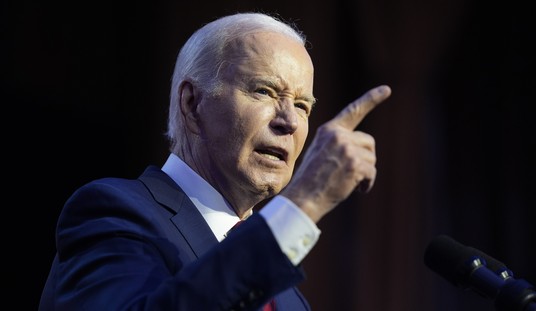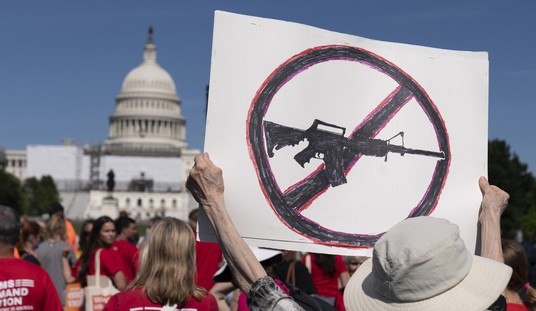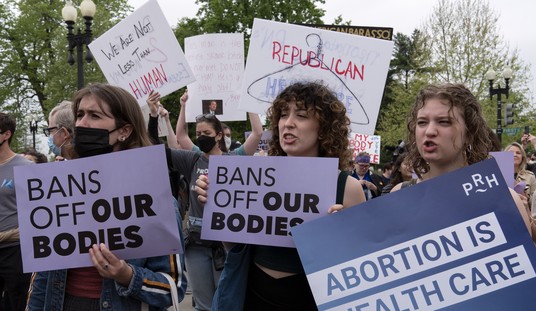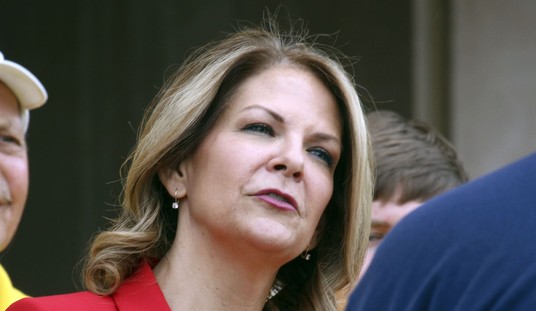As a rule of thumb, any idea coming from a gang is not a good one. This holds true in the real world; it is certainly true in the gangster world of the U.S. Senate. Members of the media are agog with glee over the supposed Gang of Six deal to cut the deficit by $3.7 trillion over 10 years. There is much hype over the fact that more than half the Senate attended the unveiling of the proposal, with many Republicans – including those in leadership – offering robust praise for it. Congressman Frank Wolf (R-VA) is calling for a vote on the plan, even though most of the details don’t exist.
The festive atmosphere at the press conference prompted bearded Marxist Senator Chris Coons to observe that “if Sen. Durbin and Dr. Coburn can both endorse it, this may be just the tough discipline fiscally and the balanced path forward that we need.” So the questions begs, just how can such an ‘austere budget plan’ garner the support of liberal luminaries like Coons and Durbin?
The answer is very simple: the budget plan is devoid of a roadmap to achieve the alleged $2.7 trillion in cuts and $1 trillion in revenue gains. Furthermore, the proposal relies upon the passage of some conservative reforms, which if seriously drafted, will never be supported by a majority of the Democrat Caucus, including Gang members like Dick Durbin.
The Tax Side of the Equation
The Gang’s proposal purports to offer “a net tax relief of approximately $1.5 trillion.” Yet, the purveyors of the plan claim that it would concurrently raise revenues by $1 trillion, accounting for over 25% of the overall magical $3.7 in deficit reduction. Specifically, on the tax cutting side of the ledger, they would permanently repeal the $1.7 trillion Alternative Minimum Tax, slash the corporate tax to a flat rate between 23%-29%, and establish three personal income tax brackets with rates of 8–12 percent, 14–22 percent, and 23–29 percent. Keep in mind that they can’t count the full price tag of the AMT repeal to the $1.5 trillion in cuts because Congress passes an AMT fix every year.
On the ‘increasing revenue side’ of the ledger, they would “reform, not eliminate, tax expenditures for health, charitable giving, homeownership, and retirement, and retain support for low-income workers and families.” Yet, astoundingly, for all the talk about closing loopholes, their proposal would retain…you guessed it, the Earned Income Credit and Child Tax Credit. So after subjecting retirees to double taxation of 401(k)s and IRAs, they will retain the redistributive Earned Income Credit for many who pay little or no taxes. How’s that for a clean, flat tax system! Moreover, the Earned Income and Child tax credits cost the treasury $77 billion in annual revenue.
The plan to slash corporate, individual, and AMT is a step in the right direction, although conservatives would push for a lower corporate rate and a flatter individual rate. However, the real question is how can they accrue $1 trillion in revenue from “reform” of a few deductions and credits (while simultaneously keeping the low income credits), even as they drastically lower the marginal rates – the main source of revenue? You really mean to tell me that Chris Coons and Dick Durbin finally understand the Laffer Curve and the economic effect of cutting marginal tax rates? It’s nice to see a few Democrats signing onto a more flat tax system, but does anyone really believe they will actually support such a plan without the final product being drastically more progressive?
The Spending Side of the Equation
The Gangsters are asserting that the lion’s share of the deficit reduction will come from $2.7 trillion in spending cuts. Even more shocking, they claim that $500 billion of those cuts will be front loaded through the enforcement of discretionary spending caps through 2015. Those spending caps are not specified!
So how are these spending reductions actualized?
Healthcare
They never tally the numbers, but the biggest savings seems to come from healthcare. The healthcare scheme of the Gang represents a better magic trick than David Copperfield could ever execute. They somehow permanently solve the statutory requirement to pay doctors for extra Medicare costs, known as Doc Fix, while funding $298 billion in spending offsets for the fix. Additionally, they will drastically cut healthcare costs without a single change to Medicare and Medicaid, simply by magically finding ways to “spend health care dollars more efficiently.”
The final part of their healthcare plan is to instruct the Judiciary Committee to draft malpractice reform legislation. Yes, tort reform is actually something that would sharply lower healthcare costs and will be cheered by conservatives. But does anyone believe that Democrats will ever pass any meaningful tort reform as long as they are being bankrolled by trial lawyers.
Finally, with the exception of repeal of the Class Act, this bill leaves Obamacare, the mother of all profligate entitlements, intact. And that will reduce the deficit?
The bottom line is that, any and every other provision of the plan notwithstanding, no Republican should sign onto a budget that permanently enshrines Obamacare into our entitlement system.
Social Security
The Gang made their budget plan indissolubly tied to Social Security reform. In other words, the rest of the bill cannot pass unless there is a Social Security reform plan that garners 60 votes. Conversely, Social Security reform cannot be discussed until 60 Senators agree on the rest of the budget plan. The idea of sending SS reform to a separate, yet dependent track, is a good idea.
So what is the grand idea for Social Security that will save trillions?
They instruct the Finance Committee to draft reform that ensures “75-year solvency of the program.” The only specific idea is to peg the rate of growth for benefits to the “Chained CPI,” a more gradual measure of inflation. Quite humorously, yet predictably, they exempt SSI from the rate change for the first five years.
Discretionary Spending
The plan calls for the following cuts in discretionary spending, divided by authorizing committees:
• Armed Services would find $80 billion.
• Health, Education, Labor, and Pensions would find $70 billion.
• Homeland Security and Government Affairs would find $65 billion.
• Agriculture would find $11 billion while protecting the Supplemental Nutrition Assistance
Program.
• Commerce would find $11 billion.
• Energy would find $6 billion and may propose additional policies to generate savings
that would be applied to the infrastructure deficit or to reduce the deficit.
Aside for cuts in defense spending, does any Republican really believe that Democrats will support the elimination of one agency, much less a full department, to achieve significant savings in discretionary spending? Also, what baseline are they using to refer to these budget reforms as cuts? Will they actually reduce the deficit, or will they merely slow the rate of growth compared to some unrealistic baseline?
While the details of the bill will invariably change over the next few weeks, and there are some good things in this plan, it is appalling that so many Republicans have been quick to praise, and even fully endorse, this patchwork of smoke and mirrors. Kudos to Speaker Boehner for coming out against it early.
It looks like these guys never had all the details worked out before they announced their plan. Their sole objective was to eclipse the media attention surrounding the only coherent plan that actually balances the budget – the conservative plan.
Cut, Cap, and Balance – or bust.













Join the conversation as a VIP Member